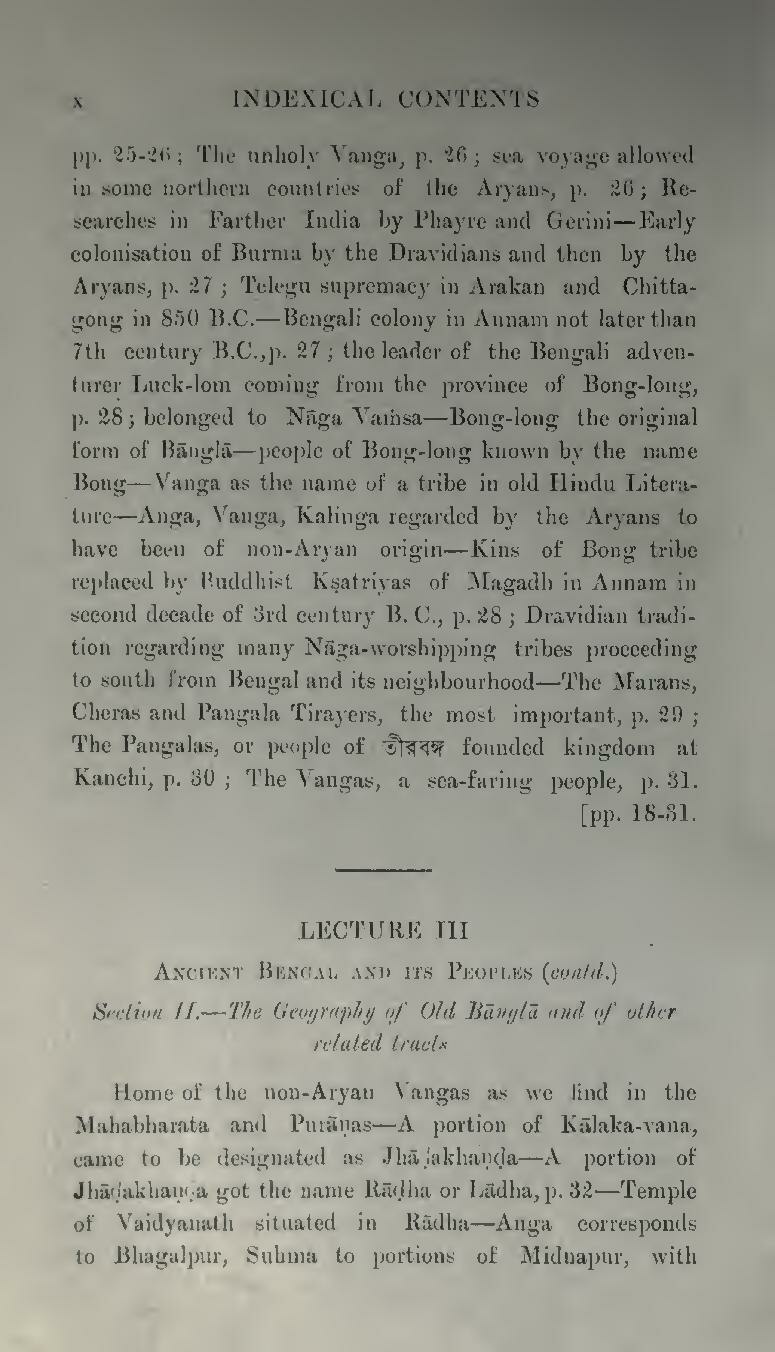pp. 25-26; The unholy Vanga, p. 26; sea voyage allowed in some northern countries of the Aryans, p. 26; Researches in Farther India by Phayre and Gerini—Early colonisation of Burma by the Dravidians and then by the Aryans, p. 27; Telegu supremacy in Arakan and Chittagong in 850 B.C.—Bengali colony in Annam not later than 7th century B.C., p. 27; the leader of the Bengali adventurer Luck-lom coming from the province of Bong-long, p. 28; belonged to Nāga Vaṁsa—Bong-long the original form of Bānglā—people of Bong-long known by the name Bong—Vanga as the name of a tribe in old Hindu Literature—Anga, Vanga, Kalinga regarded by the Aryans to have been of non-Aryan origin—Kins of Bong tribe replaced by Buddhist Kṣatriyas of Magadh in Annam in second decade of 3rd century B. C, p. 28; Dravidian tradition regarding many Nāga-worshipping tribes proceeding to south from Bengal and its neighbourhood—The Marans, Cheras and Pangala Tirayers, the most important, p. 29; The Pangalas, or people of তীরবঙ্গ founded kingdom at Kanchi, p. 30; The Vangas, a sea-faring people, p. 31.
Ancient Bengal and its Peoples (contd.)
Section II.—The Geography of Old Bānglā and of other related tracts
Home of the non-Aryan Vangas as we find in the Mahabharata and Purāṇas—A portion of Kālaka-vana, came to be designated as Jhāḍakhaṇḍa—A portion of Jhāḍakhaṇḍa got the name Rāḍha or Lāḍha, p. 32—Temple of Vaidyanath situated in Rāḍha—Anga corresponds to Bhagalpur, Suhma to portions of Midnapur, with
